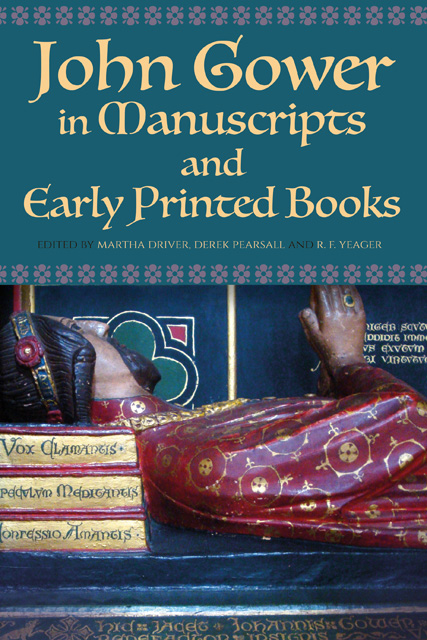6 - Paratextual Deviations: The Transmission and Translation of Gower’s Confessio Amantis in the Iberian Peninsula
Published online by Cambridge University Press: 18 January 2023
Summary
One of the most widespread perceptions regarding John Gower’s Confessio Amantis is the relative regularity shown by text and mise-en-page across all recensions and manuscript groups. Scholars, of course, have noted the differences between the extant witnesses of the poem, but so far the efforts to engage in a comprehensive study of what makes them distinct from each other – and what this means for our idea of the author, the text, and the scribe – are still scant. In part, Gowerians might have been disinclined to undertake the collation of all the extant copies of the poem because of the existence of several excellent editions based on Oxford, Bodleian Library, MS Fairfax 3, a manuscript that embodies the long-held idea that the text of the Confessio “exhibited a steady tendency to rid itself of error.” But there is value in divergence, in the variants, scribal or otherwise, found in the poem and in the Latin apparatus that accompanies it.
Divergence can be especially useful to study the Iberian translations of the Confessio: the rendering of a text into another language inevitably brings forward modifications that range from lexical variation, to content adaptation, or changes in the layout introduced to conform to a new geographical and cultural context. One of the most radical adaptations undergone by the English Confessio in its new life in the Iberian Peninsula was the loss of its Latin apparatus, which was either translated into Portuguese and Castilian or eliminated completely. The manuscript Madrid, Real Biblioteca MS II-3088 (henceforth MS Real Biblioteca) contains the Portuguese translation of the Confessio, the Livro do Amante: it was copied in Ceuta in 1430 by the scribe Joham Barroso at the behest of a Portuguese nobleman called Fernando de Castro, “o Moço” [the younger]. The original Latin apparatus that features in the majority of the extant English manuscripts of the poem was translated into Portuguese and greatly reduced, both in size and content: the Latin verses and most of the marginal glosses common in the English manuscripts are omitted in the Portuguese copy, and of the roughly five hundred Latin prose summaries that precede the tales in the Confessio, only three hundred and fifty are kept in the Livro do Amante, written in red and inserted in the text column before the tales.
- Type
- Chapter
- Information
- John Gower in Manuscripts and Early Printed Books , pp. 113 - 130Publisher: Boydell & BrewerPrint publication year: 2020



